#informationisbeautiful
Explore tagged Tumblr posts
Photo

International number ones.
Because every country is the best at something
Made by "David McCandless" in February 2019
358 notes
·
View notes
Text
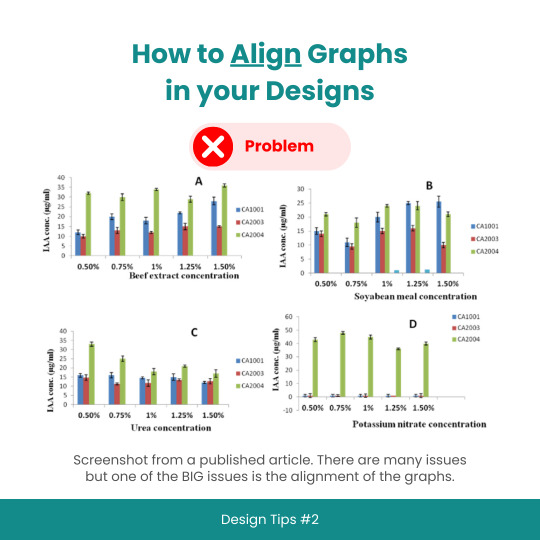
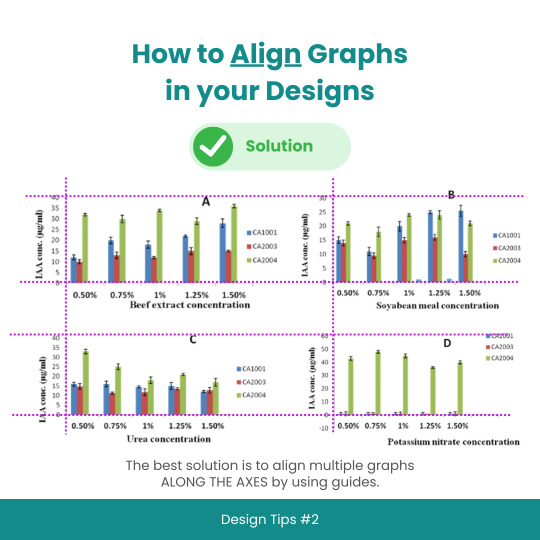
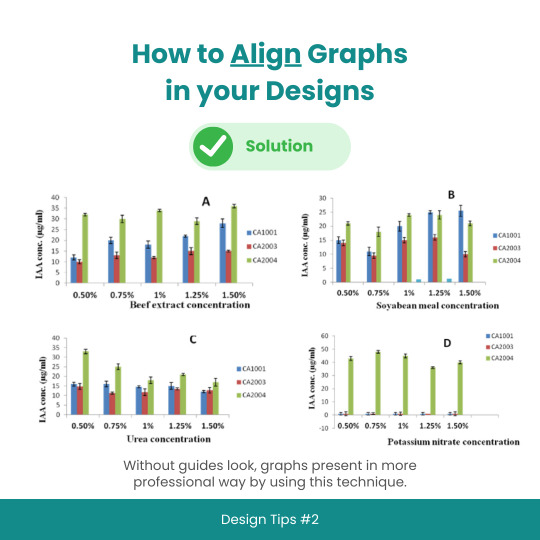
Design Tips #2: How to Align Graphs in your Designs
#designtips#datavisualization#graph#data#statistics#analytics#dataisbeautiful#chart#dashboard#datagram#dataart#infographic#informationisbeautiful#datatellingstories#datadesign#ddj#datasketch#dataviz
3 notes
·
View notes
Text
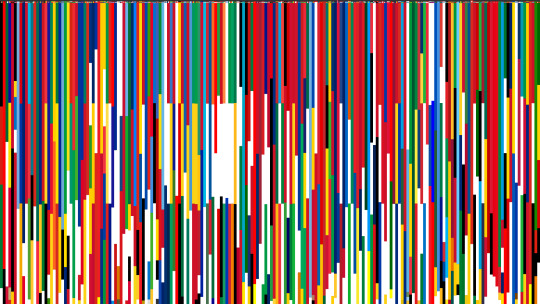

Flags by Colours % Updated variation of my 2007 project. Flags used for the update are from Wikipedia on September 2024.
#flagsbycolour#si#visualizations#generative#generativeart#creativecoding#datavisualisation#informationisbeautiful#infographics#ColourResearch#flags#colourAnalysis
0 notes
Photo

god I am so tired of people throwing roses at my feet as I walk by… #missinformation #missknowitall #informationisbeautiful #informationispower #titleholder #crownedforsuccess #crowned👑 (at Catalina Foothills, Arizona) https://www.instagram.com/p/CSAy5S8FaF4AjABcROn5t1QQad25y8gQj8f8i40/?utm_medium=tumblr
#missinformation#missknowitall#informationisbeautiful#informationispower#titleholder#crownedforsuccess#crowned👑
4 notes
·
View notes
Text

Please check out and give feedback on my experiment - Storytelling with Data on YouTube
https://youtu.be/vJsVOI2KRkk
#informationisbeautiful#dataisbeautiful#dataviz#database#data science#google chrome#sundar pichai#data privacy#data plan#data points
1 note
·
View note
Text
The Pyramid of American Wealth Inequality
The pyramid is a work-in-progress illustration of U.S. wealth inequality through visualizing this familiar and disturbing statistic: “ Today in the United States, the wealthiest top 0.1% owns about the same amount of wealth as the bottom 90%.”

Hi res, sources, and contact available at http://www.thepyramidschool.org
#dataviz#datavisualization#informationisbeautiful#dataisbeautiful#deardata#infographic#politicalart#political memes#bernie 2020#bernie2020#bernie sanders
2 notes
·
View notes
Photo

I'm excited to have had an article published today in Nightingale, the @datavizsociety online magazine... "It was by accident and during a crossroads in @Phoenix's life, when she found dataviz. A practical person, good at DIY, with creative problem-solving skills, read about how data visualization scratched an itch for more artistic expressions for that creativity" https://nightingaledvs.com/discovering-data-visualisation-how-i-discovered-and-fell-in-love-with-data-visualisation-art/ #datavizualisation #datavisualisation #datavis #dataviz #informationisbeautiful https://www.instagram.com/p/CkbZNhkD9K7/?igshid=NGJjMDIxMWI=
0 notes
Photo
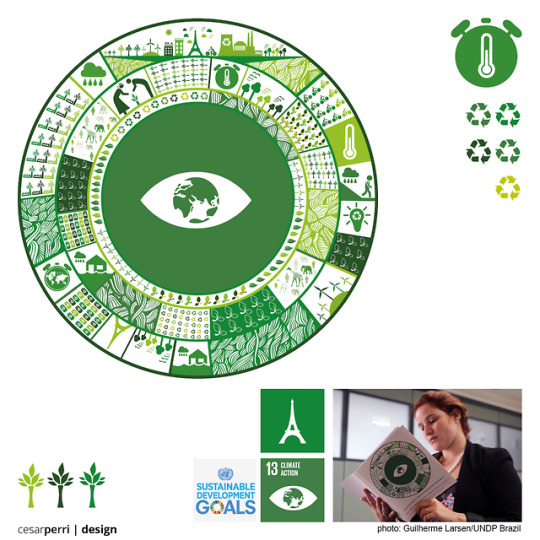
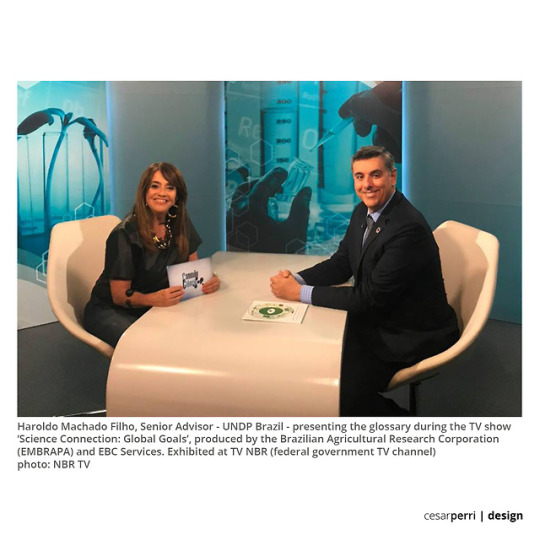
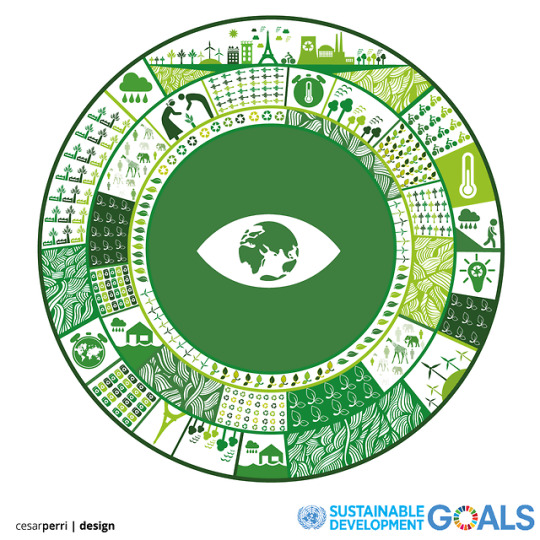
Glossary of Terms: Goal 13: Climate Action - UNDP Brazil
#COP23 #ClimateAction #climatechange #ParisAgreement #EnvironmentalHealth��#green #sustainability #environment #Agenda2030 #FutureWeWant #Rio #globalwarming #UNDP #InformationIsBeautiful #infodesign #graphics #digitalart #informationdesign #graphicdesign #vector #UN #cesarperridesign
#COP23#ClimateAction#climatechange#ParisAgreement#EnvironmentalHealth#green#sustainability#environment#Agenda2030#FutureWeWant#Rio#globalwarming#UNDP#InformationisBeautiful#infodesign#graphics#informationdesign#graphicdesign#vector#UN#cesarperridesign
3 notes
·
View notes
Photo
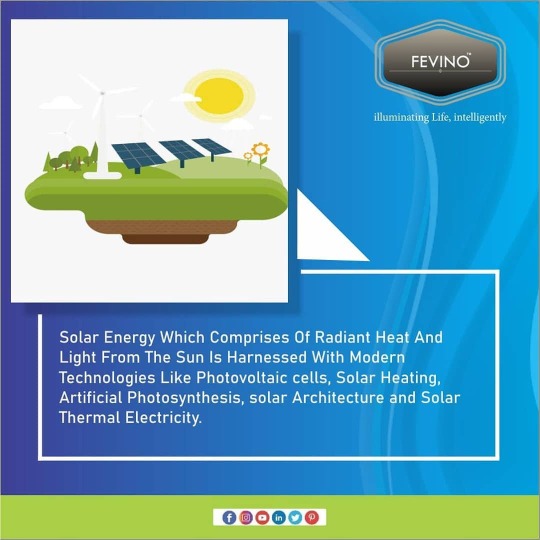
#solarfacts . Contact us for our product details . Call : 8421585960 . Email : [email protected] . Website : http://www.fevino.in . . #solafactory #radient #sunenergy1 #factsheet #factsheets4ceos #factabout #factaboutlife #factaboutbts #sunin #informationsystems #informationwarfare #informationisbeautiful #informationispower #lightingfacts #heattoheat #energygenerator #energycrew #photovoltic #solarcells #photosynthesis #solararchitecture #thermalpark #solarelectric #solarelectrician #solarelectricboat (at Maharashtra) https://www.instagram.com/p/CFXPft3nhHf/?igshid=ke5076wnk0mo
#solarfacts#solafactory#radient#sunenergy1#factsheet#factsheets4ceos#factabout#factaboutlife#factaboutbts#sunin#informationsystems#informationwarfare#informationisbeautiful#informationispower#lightingfacts#heattoheat#energygenerator#energycrew#photovoltic#solarcells#photosynthesis#solararchitecture#thermalpark#solarelectric#solarelectrician#solarelectricboat
0 notes
Photo

# infoworldmap.blogspot.com Studying effectively is a process , not an event The process which lead into Success but majority of the students not yet has reached at the effective studyng. 🌍Not hard work but smart work IN THIS PAGE - 10 TIPS FOR EFFECTIVE LEARNING - HOW TO LEARN EFFECTIVELY - STEPS FOR EFFECTIVE STUDYING - BEST TIME FOR EFFECTIVE STUDY FIX THE TIMR FOR STUDYING .....Read our website #blogger #bloggersupport #education #informationisbeautiful #facts #encyclopedia #webtoon #people https://www.instagram.com/p/B-E2L60gDMi/?igshid=1ptuca8384e5x
0 notes
Text
Let’s Flatten the Curve!

Graph source : Informationisbeautiful
-- Let’s survive this outbreak together.
This post basically is "how to read this graph��, buat orang seperti aku yang udah pernah liat sebelumnya, tapi nda’ paham maksudnya apa.
Grafik ini intinya adalah 2 skenario berbeda (biru & oranye) dari persebaran COVID-19. Quantitasnya sama, hanya waktu persebarannya yang berbeda.
Grafik oranye menggambarkan apabila dalam waktu sebentar, COVID bisa menginfeksi banyak orang dalam sampel.
Grafik biru menggambarkan persebaran yang lebih lambat, meski waktunya lebih lama, tapi kuantitas pada tiap waktunya lebih sedikit.
Di grafik itu ada batas “Healthcare system capacity” artinya apa? Dengan kita bikin flat kurvanya, meski waktunya bakal lebih lama, tapi kapasitas rumah sakit bisa cukup untuk masuk pasien, keluar pasien. Intinya, pasien yang berada di atas batas healthcare system capacity, tidak terselamatkan.
Kita bisa lihat bahwa di kurva oranye, lebih banyak yang berada di atas batas dibandingkan di bawah batas. Sedangkan di kurva biru, meskipun lebih lama waktunya, tapi lebih banyak orang yang di bawah batas, yang terselamatkan.
So, let’s flatten the curve! Asumsinya adalah, kita kemungkinan besarnya bakal kena, tapi semoga pas kita kena, healthcare system capacitynya masih muat buat numpang kita. Being pessimistic kadang bikin hidup lebih aman.
Nah. Untuk flatten the curve, di masing-masing kurva udah ditulis :
Kurva oranye : “Outbreak without protective measures.”
Kurva biru : “Outbreak with protective measures.”
Apa itu protective measures?
Di kanan atas grafik sudah dituliskan, ada 2 tipe protective measures. Untuk individual, dan untuk pemerintah.
Basic protective measure buat kita sebagai individu adalah : sering cuci tangan pake sabun, jangan panik tapi tetap hati hati, jangan sentuh muka, stay at home if sick (atau kalau bisa stay at home aja).
Sebagai individu, kita juga harus dukung government kalau lagi melaksanakan protective measures. Jangan cap pemerintah panik atau apa, karena memang langkah-langkah itu dibutuhkan di keadaan yang unknown kayak sekarang. Selama itu bisa flatten the curve, why not? Kalau secara logika masuk, then believe it, jangan sok kuat, jangan sok tahu.
Tips buat individu (external references) :
Tips ngga nyentuh muka : How to touch your face less
Tips biar ngga panik & paham situasi realnya : COVID-19 #Coronavirus Data-Pack
Tips & trick lain dari media kesukaan gue (tips kegiatan kalau diisolasi, tips pacaran disaat wabah, dll) : COVID-19 Watch by Asumsi
Okay, that’s all for me! Jangan lupa buat kasih paham ke temen-temen terdekat soal grafik ini & cara flatten the curve, karena ini butuh usaha semua orang yang terlibat.
Stay safe, semoga kita semua survive bersama.
3 notes
·
View notes
Photo

Now accepting new clients and sponsorships, fintech/combat medic/analyst/researcher/logistics/veteran/entrepreneur/model/actress/singer/blogger/writer in progress... Life happens... your best asset is health! You will get a personalized copy of my first edition #eat2fuel by #selfaidwarriors if you donate over $100. I will send a micro-version as soon as that product is done. Then, I will continue the live version series and updates.... upgrade editions as the book is in progress, live book e-series. Hard copy versions will be printed as requested and agreed. Help me support my troops, they want free copies and now. Thank you for your support Who wants to help me help others? #educationovermedication Humanitarian Logistics Consultant #combatmedic #firstaidhealth edition Let's heal from the inside. #healthiswealth #informationisbeautiful #homeopathic #progressisaprocess #USAF #veteran #sunshinesoldier #CryptoQueenE Evelina Hernandez "SSGT WYAND" "SSGT Hernandez" "I got your six!" Training manual in progress xoxo All donations welcome in cryptocurrency or the old country fiat 🤓🤗🖤💞 ----------------------------------------------- BTC 1uUHmaxbSn5TmCT5ACFVkLyoGr9YCS9FZ ETH 0x0Fd290b5874d0Be771dFe81bd9d1Bc5380577deE LTC LMdebh2i2bVdrFDxVd6wQay6jmitfhh2S8 Please share, thank you! (at Hollywood) https://www.instagram.com/p/Bpqitm8FJ43/?utm_source=ig_tumblr_share&igshid=y0nyodm45e0u
#eat2fuel#selfaidwarriors#educationovermedication#combatmedic#firstaidhealth#healthiswealth#informationisbeautiful#homeopathic#progressisaprocess#usaf#veteran#sunshinesoldier#cryptoqueene
0 notes
Photo

I found this coil #infographic about common myths and the truths behind them! #informationisbeautiful #myths #lifestyleblogger
0 notes
Text


اسم الكتاب:
100 Things Every Designer Needs to Know About People
100 شيئ يحتاج أن يعرفه المصمم عن الناس
اسم الكاتب: سوزان وينشينك
تلخيص: مريم صباح
الكتاب ينصح بقراءته لأي شخص مهتم بعالم التصميم. ستفيده القائمة المذكورة في الكتاب على تحليل سلوكيات الناس وبالأخص العملاء اتجاه التصاميم. الكتاب مقسم إلى أقسام متعددة مثل: - كيف يرى وكيف يقرأ الناس- كيف يفكر الناس، والكثير من الأقسام أيضًا.
ألطف ما في هذا الكتاب هو "الوجبات السريعة" في نهاية كل قسم فرعي والتي توفر لك بعض التوصيات الملموسة في نهاية كل جزء والم��تبطة بطريقة تفكير الناس وتأثيرها على التصميم. قد تتمكن من إقناع الناس برؤية الأشياء بطريقة معينة، اعتمادا على كيفية تقديمها، فهناك بعض الأشياء التي تعرض على الناس بشكل يومي واعتيادي ولكن عندما تختلف طريقة عرضك لها تصبح أكثر تأثيرًا. إحدى الأمثلة على ذلك هي السيرة الذاتية التي اعتاد الناس بشكل عام على رؤيتها على الورق، ولكن عندما يتم عرضها لهم بطريقة الثري دي المتحرك سيثير هذا دهشتهم واهتمامهم بشكل أكبر.
فيما يلي أهم ما يمكن أن يتعلمه المصمم من الكتاب:
➢ على الرغم من أن منتصف أو وسط الشاشة مهم للرؤية المركزية، لا تتجاهل ما في الرؤية المحيطية للمشاهدين. تأكد من أن المعلومات الموجودة في الهامش تتواصل بوضوح مع الغرض من الصفحة والموقع.
➢ إذا كنت تريد أن يركز المستخدمون على جزء معين من الشاشة، فلا تضع الرسوم المتحركة أو العناصر الواضحة في رؤيتهم المحيطية.
➢ ضع أهم المعلومات (أو الأشياء التي تريد أن يركز عليها الأشخاص) في الثلث العلوي من الشاشة أو في الوسط.
➢ تجنب وضع أي شيء مهم على الحواف، لأن الناس لا يميلون إلى النظر إلى هناك.
➢ قبل استخدام الخطوط أو المربعات لفصل العناصر أو تجميعها معا، حاول تجربة مقدار المسافة بينها أولاً. في بعض الأحيان يكون تغيير المسافات كافيا، وسوف تقلل من الضوضاء البصرية للصفحة.
➢ اختر ألوانك بعناية مع مراعاة المعنى الذي قد تستدعيه الألوان.
➢اختر بعض الثقافات أو البلدان الرئيسية التي ستصل إليها مع تصميمك وتحقق منها على الرسم البياني للألوان الثقافية سيساعدك في هذا الأمر هذا الموقع :
informationisbeautiful
➢ عندما تحتاج إلى جذب انتباه شخص إلى عنوان ما، دائماً قم باستخدام الحروف الكبيرة لكي تشد انتباهه.
➢ لا تطلب من الناس أن يتذكروا المعلومات من مكان إلى آخر، مثل قراءة الحروف أو الأرقام في صفحة واحدة ثم إدخالها في صفحة أخرى ؛ إذا قمت بذلك ، فمن المحتمل أن ينسوا المعلومات ويصابوا بالإحباط.
➢ استخدم القصص في معالجة المعلومات لشد انتباه الناس فإن استخدام القصص سيجعلها مفهومة ومثيرة للاهتمام ولا تُنسى.
➢ سيخبرك الأشخاص بأن بإمكانهم القيام بمهام متعددة لكنهم في الواقع لا يمكنهم ذلك. أولئك الذين يصفون أنفسهم بأنهم قادرون على إنجاز مهام متعددة في آن واحد هم الأسوأ في ذلك.
➢ إذا كنت تجري مقابلة مع أشخاص حول كيفية استخدامهم للمنت�� الذي تصممه ، فاحرص على كيفية تفسير المقابلات أو تحليلها. سيكون لديك ميل للتفكير في "ما سيفعله الناس" استنادا إلى الشخصية وتفقد العوامل الظرفية.
➢ لا تقلل من أهمية مشاهدة شخص آخر يقوم بشيء ما. إذا كنت ترغب في التأثير على سلوك شخص ما، فأظهر لشخص آخر يقوم بنفس المهمة. تظهر الأبحاث أن القصص تخلق صورا في العقل قد تؤدي أيضا إلى تنشيط خلايا عصبية متطابقة.
➢ لا يفضل الاتفاق أو النقاش مع العميل عبر الهاتف أو البريد الإلكتروني. يكون الحصول على تعليقات العملاء أو الجمهور أكثر دقة عند القيام به شخصيا فترى ملامح الوجه وتعرفها وتقوم بتحليلها.
2 notes
·
View notes
Photo

A video was shared with us yesterday on a talk given by William Henry, an investigative mythologist, art historian, author, and TV presentor. This talk is on how there is a "Great Plan" happening in front of our eyes. This plan is the convergence of Artificial Intelligence and Humanity. This video and talk has made us realize how important our work is here and how we must prepare ourselves for what is next, physically and spiritually. We are sharing this video with you now. 》𝐓𝐎 𝐖𝐀𝐓𝐂𝐇, enter our website and read our latest post《 𝐋𝐈𝐍𝐊 𝐈𝐍 𝐁𝐈𝐎 You can also watch this video and others shared within the 𝐄𝐗𝐏𝐋𝐎𝐑𝐄 section of the site. We encourage you to watch and share this video with as many people you feel the need to. 🙏🏼🌌 Follow @thewritingsofnatalia for more information and inspiration related to your spiritual and personal growth. ✨️ . . . . . . #ai #artificialintelligence #artificalintelligence #artificial #robot #irobot #spiritualwarfare #spiritualwarrior #spiritualwar #spiritualwarriors #spiritualwarfareisreal #spiritualwarriorlifestyle #spirituality #spiritualgrowth #spiritualwisdom #consciousness #consciousnessshift #higherconsciousness #expandingconsciousness #cosmicconsciousness #consciousness #collectiveconsciousness #christconsciousness #consciousnesscreatesreality #5dconsciousness #5d #realityshifting #spiritualhelp #spiritualinsights #wisdomoftheday #informationisbeautiful (at The Universe) https://www.instagram.com/p/CcTbj02PfXJ/?igshid=NGJjMDIxMWI=
#ai#artificialintelligence#artificalintelligence#artificial#robot#irobot#spiritualwarfare#spiritualwarrior#spiritualwar#spiritualwarriors#spiritualwarfareisreal#spiritualwarriorlifestyle#spirituality#spiritualgrowth#spiritualwisdom#consciousness#consciousnessshift#higherconsciousness#expandingconsciousness#cosmicconsciousness#collectiveconsciousness#christconsciousness#consciousnesscreatesreality#5dconsciousness#5d#realityshifting#spiritualhelp#spiritualinsights#wisdomoftheday#informationisbeautiful
0 notes
Text
Why Peak Viral Load makes temperature screening alone insufficient for COVID-19
By TONY ESTRELLA
And how South Korea and Taiwan’s approach to diagnosis and tracking is leading to positive results
By now, the sight of people wearing surgical masks, flinching at the sights and sounds of someone coughing or sneezing, governments restricting large gatherings, and sports leagues suspending or cancelling matches is familiar across the world.
Even though this newest coronavirus we now call COVID-19 is not the deadliest disease as measured by daily deaths, the concern over the outbreak is forcing urgent actions.
Daily deaths from COVID-19 compared to other diseases. Source: informationisbeautiful
One of the core concerns is limiting how quickly the virus can spread. Having too many people require urgent care can overwhelm healthcare systems. This anxiety has led to a call to ‘flatten the curve’ to avoid this challenge.

The approach to implement protective measures includes a mix of policy decisions, use of technology, proven clinical tools, and rapid responses to conditions that are rapidly changing. If you ask any entrepreneur or innovator, the key to achieving successful solutions is to understand ‘what problem are you trying to solve?’. In this COVID-19 pandemic, three pain points stand out requiring wide-scale attention:
1. How to identify COVID-19 positive carriers within a large group of people?
2. How to manage the health of people either in a home quarantine or in a hospital setting?
3. How can new data quickly be aggregated and shared to develop new insights for prevention, care, and vaccine development?
In the first of three articles, we’ll explore the challenge currently dominating news headlines globally: how to identify positive carriers of the virus. Let’s start by reviewing how COVID-19 actively spreads.
The link between “Peak Viral Load” and transmitting the virus
In 2003, SARS spread across Asia and left an indelible memory on people working in clinical settings, policymakers, and families. SARS also created a baseline virus profile which can compared with COVID-19. Researchers from Johns Hopkins recently published an article comparing the two viruses. The results from both this study and information shared by a panel of experts from a recent webinar by WuXi NextCODE uncovered one crucial difference: the timing of the Peak Viral Load — the maximum concentration of the virus, versus Peak Symptom Strength — theperiod where a person experiences the most substantial effects of the virus.
In SARS, the peak Viral Load occurred at about the same time as the peak period of symptom strength.

SARS = peaks aligned for maximum viral load and symptom strength
In COVID-19, the peak Viral Load occurs days before any symptoms may show up.

COVID-19 = peak viral load comes before peak symptom strength
Current data is showing that individuals can have COVID-19 without showing symptoms during the first 5 days, AND this may also be when individuals are most infectious.
How to identify COVID-19 positive carriers within a large group of people?
Thousands of people trapped on cruise ships. People stepping off a flight. Workers seeking to enter their office building. Hospital staff caring for COVID-19 patients.
These are only a few examples where there is a burning need for tools to identify carriers of coronavirus. To better understand this group of pain points, let’s differentiate between the two cases:
1) Case 1: Screenings are tests given to individuals to search for visible symptoms
2) Case 2: Diagnostics are tests given to individuals to identify the presence or absence of a disease definitively
Temperature checks are the current global standard for screenings. Whether these are by handheld thermometers administered person-by-person, or by industrial-grade thermal cameras scanning larger groups at one time such as at offices entrances and airports, the objective of this approach is to find people who have a fever. Unfortunately, a high temperature is not an exclusive symptom for COVID-19. Other types of coronaviruses, such as the common cold or the seasonal flu, can also cause a fever.
Therefore, the more exact pain point for Screening is how to better identify people who could spread COVID-19. Given the information from the Johns Hopkins study, this is currently an overwhelming challenge since people can be carriers of COVID-19 without showing symptoms.
The need for Diagnostics is how to deploy tests at large scale to assess whether large groups of people currently have COVID-19. This pain point is operationally complex because it requires three dependencies. First, a country must have an approved and standardised test which is easily accessible and returns results quickly. Second, each country’s regulatory bodies for healthcare must support the approach. And finally, there must be sufficient infrastructure to process the samples and return the results in a time-efficient manner.
The following questions can help shape the solution design for both screenings and diagnostics to fix this critical pain point:
1) Can an assessment be deployed to a large number of people in a cost-efficient way?
2) Can people be tested both once and if necessary, repeatedly?
3) How can data be used to identify clusters quickly?
4) How are regulators within each country fast-tracking approvals to tap into new solutions?
5) Can the waiting time be reduced from testing to receive an accurate result?
6) How can data privacy be protected?
7) How can results be analysed at scale with a rapid turn-around?
Let’s look at some real-life examples, starting with expanding the tools for diagnosing COVID-19.
In Singapore, the Home Team Science and Technology Agency (HTX) and Veredus Laboratories jointly developed and received regulatory approval for a new diagnostic kit in less than two months. The tests, which examine two swabs taken from a person’s nose, return a result with 99% accuracy in three hours. These kits can be deployed in various settings, including passengers getting off cruise ships. The speed for creating this solution is possible because it only took 1 month to identify the genomic profile for COVID-19 versus 1 year to accomplish the same for SARS. Currently, the volume of these tests is relatively low and is only available in Singapore. Regardless, the product is already making a significant impact on the island-state.
In Germany, Qiagen is a biotech company who already sells a test that analyses nose and throat swabs for numerous viruses in 30 countries around the world. Their analysis platform searches for 20 different virus variations concurrently in a cartridge-and-scan system that is already deployed widely, but only when their product has regulatory approval. After the outbreak of COVID-19, the company added a new test to identify this new coronavirus into its existing cartridge-based system. They then validated the accuracy of the platform to identify COVID-19 with Chinese patients known to have the virus. The company had success in detecting COVID-19 with results available in less than 1 hour. Qiagen has submitted for regulatory approval including with the FDA in the US. After approval, the hope is to distribute these diagnostic tests across the relevant portion of their 500,000 customers globally within the next month.
A discussion on technical innovation wouldn’t be complete without a mention of how Artificial Intelligence is being used to aid in the fight for COVID-19 detection. Inside the hospitals, China’s inferVISION used 2,000 CT images to train its AI algorithm to identify visual signs of COVID-19. It is helping alleviate tired healthcare workers by providing a tool which can objectively and quickly identify patients from radiological scans of people’s lungs from admitted patients. The system had been deployed in at least 34 hospitals and was used to review 32,000 cases of COVID-19. While this is an interesting approach, it may require more exploration to determine whether additional inputs are needed for it to be an independent and accurate diagnostic.
Case study: How South Korea rapidly ramped up diagnostic testing
As of 13 March, every country is battling to test its population to identify carriers of COVID-19 using some form of diagnostic technology. South Korea has been the most effective at testing large numbers of their society — testing over 20,000 people per day. The BBC covers South Korea’s approach well in this article.

This data becomes more meaningful when accounting for the population size of the country — tests per million people:

The results from these efforts is drastically affecting the number of new daily cases, with more details covered here in this article.

From SCMP
South Korea learned from their experiences with MERS in 2015 to approach diagnosing people differently in future outbreaks. Other countries can potentially adopt two key lessons from their revised approach:
1) Make diagnostic tests widely available quickly: From the BBC article, they state that “there is no shortage of testing kits in South Korea. Four companies have been given approval to make them. It means the country has the capacity to test 140,000 samples a week.” Compare those number of tests per week with those of other countries, and it’s easy to see how the policy and procedures of decision-makers helped meet this urgent demand.
2) Make it easy for people to get tested: It may not always be sensible for people to go to a doctor or a hospital to get tested. South Korean officials borrowed an approach commonly used for other purposes: the drive-thru. Other countries should consider the natural movements of people while practising ‘social distancing’ to make testing both available and deliver on quick turn-around times to limit the potential spread of the virus.
Case study: How Taiwan learned from SARS to limit the fast-spreading of a new outbreak
Taiwan shares many commonalities with Mainland China. A large number of people fly between Taipei and numerous Mainland cities. During SARS, Taiwan learned first-hand that a viral exposure could spread with equal speed because of these travel patterns. They suffered the most number of deaths outside of the mainland and Hong Kong.
After SARS, Taiwan revamped many policies and infrastructure decisions. This Stanford article covers the details well.
As a result of their actions, the spread of COVID-19 has been largely contained, especially compared to the rapid increases seen across the mainland in January and February. As of 13 March, the number of confirmed cases remains below 100. Some lessons from the actions taken by Taiwan include:
1) Keep a strong central command structure. National Health Command Center (NHCC) plays a critical role in to evaluate data and guide centralised decisions. The centralised approach provides clarity for information sharing to all other agencies and parties assisting with limiting the effects from the outbreak, including private industry.
2) Keep enough stocks of crucial medical equipment. Whereas there have been global shortages of masks when COVID-19 reaches a new country, in Taiwan, they carefully managed inventory of protective equipment. For masks, they ensured that there were sufficient stocks available, and the country is capable of manufacturing 10 million new masks per day. And last, the use of a price cap made it possible to limit unnecessary gouging.
3) Data, data, data. From using mobile phone tracking data to track quarantined people to monitoring where each case took place, connecting data points plays a critical role in managing the population risk. The most visible example of data integration came from combining data sets for health from the National Health Insurance Administration and travel from the National Immigration Agency. This combination drove actionable decisions for where to take focus resources, including diagnostic testing, to prevent uncontrolled outbreaks.
A wish for everyone to stay safe and informed
According to the Johns Hopkins study mentioned earlier, there are two practical points we should all follow in lieu of having comprehensive technology tools for screening: 1) “Social distance is the most effective tool we have right now”, and 2) “data generally backs the 2-week quarantine”.
As more extensive and clinical studies are conducted, we’ll eventually have more refined guidance. But for now, we are living with a lot of uncertainty. With each new day, we can hope for positive information and ultimately significant changes — e.g., regulatory approvals for new tools and eventually, treatments.
I hope that the information in this article helps provide context for you. I welcome any comments and suggestions on updates for this article to make it more relevant.
Lastly, a reminder that in two future posts, I’ll cover the other pain points I mentioned earlier. Please share this article with others if you found it enlightening.
Tony Estrella is a global digital health expert and author. This post originally appeared on Medium here.
The post Why Peak Viral Load makes temperature screening alone insufficient for COVID-19 appeared first on The Health Care Blog.
Why Peak Viral Load makes temperature screening alone insufficient for COVID-19 published first on https://venabeahan.tumblr.com
0 notes